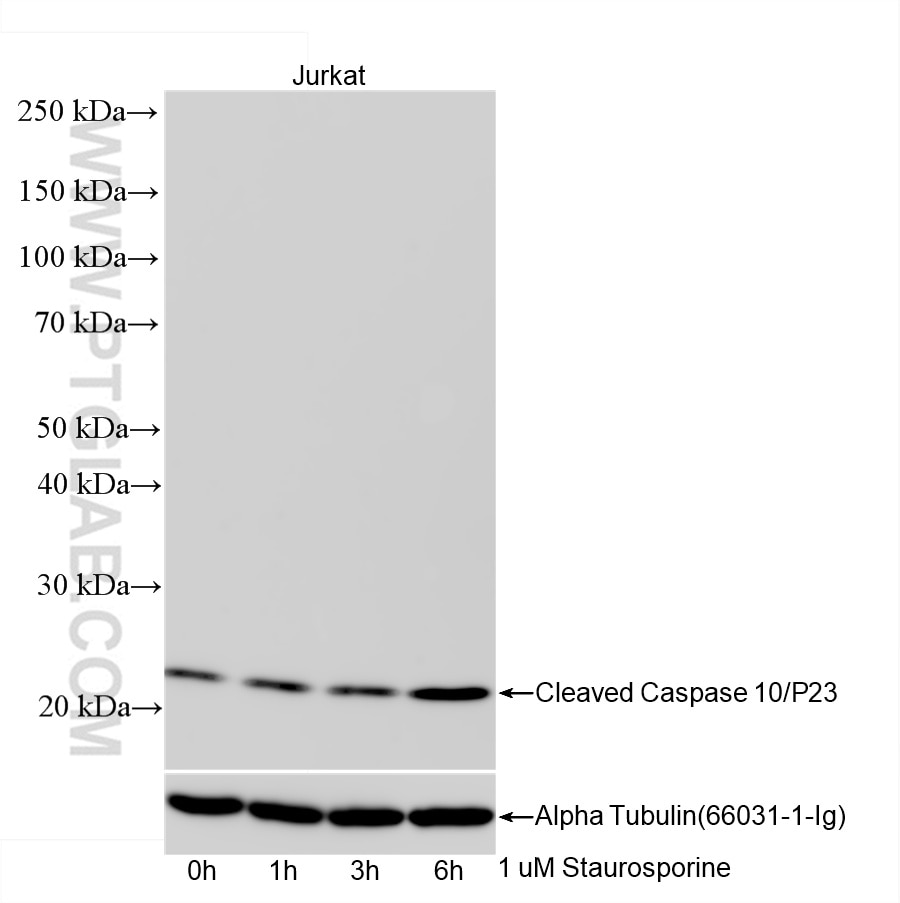Tested Applications
| Positive WB detected in | Staurosporine treated Jurkat cells |
Recommended dilution
| Application | Dilution |
|---|---|
| Western Blot (WB) | WB : 1:1000-1:4000 |
| It is recommended that this reagent should be titrated in each testing system to obtain optimal results. | |
| Sample-dependent, Check data in validation data gallery. | |
Product Information
85104-3-RR targets Cleaved Caspase 10/P23 in WB, ELISA applications and shows reactivity with human samples.
| Tested Reactivity | human |
| Host / Isotype | Rabbit / IgG |
| Class | Recombinant |
| Type | Antibody |
| Immunogen |
Peptide Predict reactive species |
| Full Name | caspase 10, apoptosis-related cysteine peptidase |
| Calculated Molecular Weight | 59 kDa |
| Observed Molecular Weight | 23 kDa |
| GenBank Accession Number | BC042844 |
| Gene Symbol | Caspase 10 |
| Gene ID (NCBI) | 843 |
| Conjugate | Unconjugated |
| Form | Liquid |
| Purification Method | Protein A purfication |
| UNIPROT ID | Q92851 |
| Storage Buffer | PBS with 0.02% sodium azide and 50% glycerol, pH 7.3. |
| Storage Conditions | Store at -20°C. Stable for one year after shipment. Aliquoting is unnecessary for -20oC storage. 20ul sizes contain 0.1% BSA. |
Background Information
CASP10(Caspase-10) is also named as MCH4 and belongs to the peptidase C14A family. It is recruited to the CD99 and p55 tumor necrosis factor receptor signaling complexes and promoting CD95 (APO1/Fas) apoptosis. It may also play a critical role in PTK7-knockdown-induced apoptosis, downstream of mitochondria(PMID:21103379). This protein can be Cleavage by granzyme B and autocatalytic activity generate two active subunits. Defects in CASP10 are the cause of autoimmune lymphoproliferative syndrome type 2A (ALPS2A)(PMID:16446975), familial non-Hodgkin lymphoma (NHL)(PMID:12010812) and gastric cancer (GASC)(PMID:11973654). This antibody recognize the cleaved caspase 10.
Protocols
| Product Specific Protocols | |
|---|---|
| WB protocol for Cleaved Caspase 10/P23 antibody 85104-3-RR | Download protocol |
| Standard Protocols | |
|---|---|
| Click here to view our Standard Protocols |




